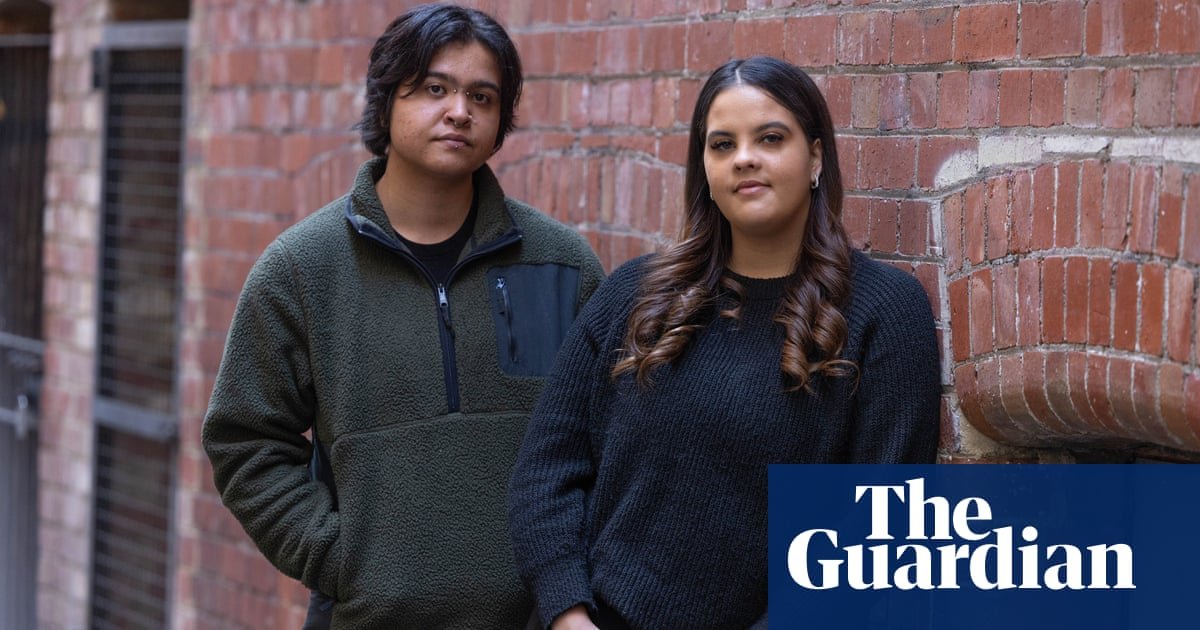Imogen is aged 24 – but says she’s been an adult for a very long time. The Kamilaroi woman says was forced to leave her home in regional Victoria when she was 14. She then spent most of the next decade sleeping rough and couch surfing in Melbourne.
“I’ve had every experience under the sun – rough sleeping, couch surfing, hostels. I’ve slept in train stations. I’ve slept in parks. I’ve slept in beaches. Anywhere you can think of,” says Imogen, who requested that her surname not be used for privacy reasons.
“It means you’re put in a lot of unsafe situations, especially as a young woman. You end up in a permanent state of fight or flight mode.”
It wasn’t until she secured long-term housing, with support from Melbourne City Mission, that she realised the toll it had on her mental health.
“Leaving home so young meant I had to lose my childhood, grow up and make decisions no child should have to make,” Imogen says.
“No child should ever have to be an adult. They should get to have a childhood.”
Yet Imogen’s experience is not unique among the 177 people, aged between 15 and 24, surveyed in the first census of homeless young people in Victoria, to be released Wednesday. About 82% of those surveyed had experienced family violence prior to becoming homeless, according to the Victorian Youth Homelessness Snapshot, conducted by Melbourne City Mission and Social Ventures Australia.
Of this group, 54% were known to child protection services.
About 55% of respondents reported experiencing self-harm, suicidal ideation or attempting to take their own life, while 45% had been admitted to an emergency department for mental health issues. Two-thirds of this group were then discharged back into homelessness.
For Ollie – who was homeless at age 16, and is now a peer support worker with Melbourne City Mission’s dedicated family violence response for young people – this is “commonplace”.
“We’ve had multiple cases of young people who have not even received a psychiatric assessment being discharged from the emergency department, put in a cab and sent straight here,” he says.
“Young people tell us they get guilt-tripped by emergency department workers for ‘taking up a bed that other people need’, because it is assumed they’re just seeking the bed because they don’t have one and not because their mental health is really bad.
“That is so incredibly harmful and it has deterred young people I know from ever seeking hospital support again.”
‘The system is completely blocked’
Across the country, more than 16,000 unaccompanied Australian children sought help from support services in 2022-23, according to data released by Homelessness Australia on Tuesday.
Mission Australia last week also released its annual youth survey, which found one in 10 young people aged 15-19 experienced homelessness in 2023. The data is in line with figures from the Australian Institute of Health and Welfare, which suggests 40,000 young people access a homelessness service every year.
According to the Melbourne survey, about 33% of young people had left home before they turned 16. Two of them were as young as 7.
Once they became homeless, the survey showed it was incredibly hard to find a way out. Two in three respondents had been homeless for more than two years; one in three had been homeless for more than five years.
Melbourne City Mission’s chief executive, Vicki Sutton, says these findings were “most shocking”.
“For young people to be trapped in homelessness for extensive periods of time – that’s horrifying,” she says. “It really just shows that the system is completely blocked. We don’t have anywhere to send young people and so they cycle round and round.”
Only a quarter of young people who access Melbourne City Mission services end up finding long-term housing, Sutton says, a figure she describes as “unacceptable”.
“When they’re struggling with instability and homelessness, they’re not engaged in education, they’re not getting the opportunity to build employment history and their mental health is only getting worse and worse,” she says.
“We’re holding them in this really awful space for far too long.”
The snapshot will be launched at the Victorian parliament on Wednesday by housing minister, Harriet Shing, with plans to conduct the census annually.
Sutton also says only 2.9% of social housing properties are leased to people aged 15 to 24 across Australia. “The highest proportion of people experiencing homelessness are young but they are very much excluded from the long-term housing system,” she says.
She urged the Victorian government to create dedicated social housing stock for young people and says at least 15,000 properties around the country are needed for them.
For Imogen, who now works in the advocacy space, she hopes the findings will force the government to act.
“I hope they realise it’s not just data on a piece of paper. We actually lived and breathed it,” she says.
“This was my life for a very long time. I’m obviously not in this situation any more, I have come out the other side. But I hope hearing the stories of our lives makes a difference.”
